All drinking water systems are in the business to provide the needed amount of water to customers at all times, no matter the situation. As those in the business know, that is easier to do at certain times than at others. One of the most difficult scenarios is delivering adequate water during a summer drought. Many water systems struggle to keep up without exhausting their water supply (be it wells or surface water) as their customers tend to use more water to keep from losing their investments such as lawns and gardens. One small and rural water system in central Alabama found a way to increase their capacity beyond their current water sources while improving redundancy and reliability.
A small utility system in central Alabama found themselves in this all too common situation. Their existing wells were pushed to capacity and the existing filters for the wells were dated and in need of improvements. The two wells were at each end of the system – one in the north had the filters and southern well was simply chlorinated. They looked for a new source by drilling test wells but only found small producing wells with fairly high levels of iron and manganese (typical in this region). A full cost analysis of a new well with filtration treatment including the operations and maintenance as well as capital costs (financing, interest, etc.) revealed that this was more than the utility could afford to spend. They were caught between financial responsibility and a major need.
The recent downturn in the economy had cost a nearby water system a major user and that capacity was now available for wholesale purchase. The system negotiated a structured rate schedule that set a minimum usage of 100,000 gallons per day and an excellent per 1,000 gallon rate above that amount. Another cost analysis was performed by Sherlock, Smith and Adams, an architectural and engineering firm based out of Montgomery, Alabama, based on a concept that would move this purchased water from one end of the system to the other. The per thousand gallon rate proved less expensive than the development of a new well. SS&A developed this concept through to design. The water system laid approximately 8 miles of 12” ductile iron water main to increase the system network capacity and then constructed three water booster stations to pump the purchased water from the connection in the south end of the system all the way to the north end of the system. SS&A retained AME Engineers, also based out of Montgomery, Alabama, for their expertise in hydraulic design and to help address concerns of the potential for the inducement of pressure transients during peak pumping rates. With a total construction cost of approximately $3 million, the system was able to increase its capacity significantly and build in redundancy to its aging water sources. This construction cost was significantly less than originally budgeted due to the competitive bidding environment and value engineering.
Each of the three booster stations utilized Goulds vertical turbine pumps with variable frequency drives (VFDs) to minimize any transients in the system (water hammer) andfor increased efficiency in power usage.
Vertical turbine pumps were selected due to their ease of maintenance, proven efficiency and cost effectiveness. Multiple curves were analyzed for each station with the efficiency and VFD operation range helping determine the best and most efficient pump for each application. VFDs in conjunction with an advanced SCADA system allowed for a large range of operation during periods of low usage as well as off peak hour pumping for electrical savings.
AME Engineers developed a computer aided water model built from water system maps to provide careful and complete system hydraulic simulation to study the possibility of induced water hammer.
KY Pipes was used for this model as it offers a simple yet powerful approach to hydraulic and even water quality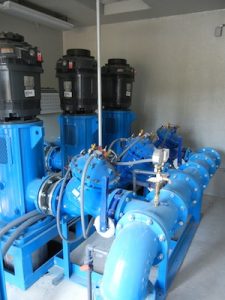 modeling. The modeling revealed that pressure transients could be present in the water distribution system as a large volume of water was going to be pushed throughout the entire system. In fact, the concern of transients was so great that pump control valves were selected to ensure that the pipeline was protected even in the event of a sudden pump shutdown due to a power outage. In addition to the computer aided water model constructed, Bermad Water Control Systems assisted in verifying the water hammer analysis and recommending specific valves for each station.
modeling. The modeling revealed that pressure transients could be present in the water distribution system as a large volume of water was going to be pushed throughout the entire system. In fact, the concern of transients was so great that pump control valves were selected to ensure that the pipeline was protected even in the event of a sudden pump shutdown due to a power outage. In addition to the computer aided water model constructed, Bermad Water Control Systems assisted in verifying the water hammer analysis and recommending specific valves for each station.
The water system looked to Morrow Water in Birmingham, Alabama, for help with the design and construction of these booster stations. They helped provide custom designed booster stations with the system’s specific needs in mind. One such need was the addition of gaseous chlorine to boost the residual disinfectant throughout the system. Morrow’s extensive experience in this area made it a simple process and provided a reliable and safe system for the use of a potentially dangerous chemical. Morrow Water built and installed the stations in accordance with the utility system’s specifications. The stations are expected to be operational by the end of the year.
SUMMARY
This small and rural water system in central Alabama was able to prepare for a drought, increase their capacity and build redundancy into their water distribution system with the use of a new purchased water connection and three booster stations. These pumps proved to be a cost effective and energy efficient method of delivering the customer’s needed water at all times and under all conditions.
About the Author:
Greg Thompson is a consulting engineer and principal for AME Engineers, based out of Montgomery, Alabama. He has been in the municipal consulting business for over 11 years specializing in assisting small to mid size communities with their drinking water and wastewater needs. He holds a bachelor of science in Civil Engineering from Auburn University.
For more information, you can reach Greg directly at greg@ame-engineers.com or visit: www.ame-engineers.com

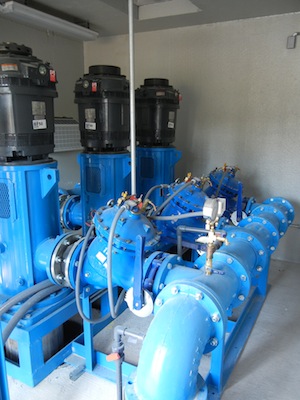
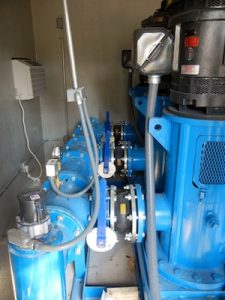
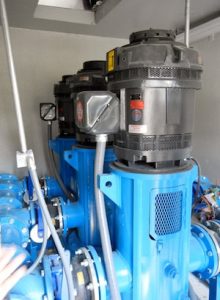
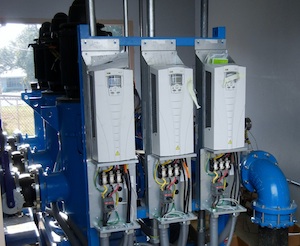



Comments